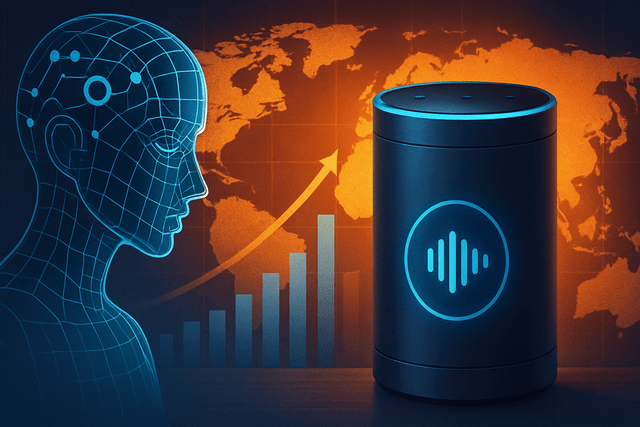The artificial intelligence voice assistant market is undergoing unprecedented expansion, transforming how humans interact with technology across multiple industries and applications.
According to recent market analyses, the global AI voice assistant sector valued at approximately $38.5 billion in 2024 is projected to reach between $104-138 billion by 2033, growing at compound annual growth rates between 15-28% depending on market segment.
This growth is primarily driven by technological advancements in natural language processing and machine learning that have significantly improved voice recognition accuracy and contextual understanding. Nearly 70% of global users now report reliance on voice-controlled devices for daily tasks, with adoption accelerating across both consumer and enterprise applications.
North America currently dominates the market with approximately 36-40% market share, bolstered by the presence of tech giants like Amazon, Google, and Apple who continue to lead innovation. However, the Asia-Pacific region is experiencing the fastest growth rate due to increasing smartphone penetration and government initiatives supporting digital transformation.
The market is witnessing several key trends, including the integration of emotional intelligence capabilities that allow voice assistants to detect and respond to user emotions through vocal cues. Additionally, multilingual support is expanding rapidly, with companies investing heavily in voice assistants that can understand and respond in multiple languages to cater to global audiences.
Industry-specific applications are driving significant growth, particularly in healthcare, automotive, and enterprise sectors. In healthcare, voice assistants are being deployed for patient management, medication reminders, and clinical documentation. Microsoft's Dragon Copilot, launched in March 2025, exemplifies this trend as a voice-activated AI assistant for doctors that drafts clinical notes and referrals.
The enterprise segment holds approximately 42% of the market ($14.07 billion in 2024), with applications focused on customer service automation, workflow management, and communication tools. Meanwhile, in the automotive sector, over 50% of new vehicles now come equipped with AI-powered voice systems.
Despite this growth, challenges remain, including privacy concerns, market saturation, and the need for improved multilingual capabilities. Companies are actively addressing these issues through enhanced security measures and continued investment in research and development.
As voice becomes the primary interface for AI interaction, industry experts predict that by 2025, 50% of knowledge workers will regularly use virtual assistants, further cementing voice technology as a fundamental component of our digital future.

